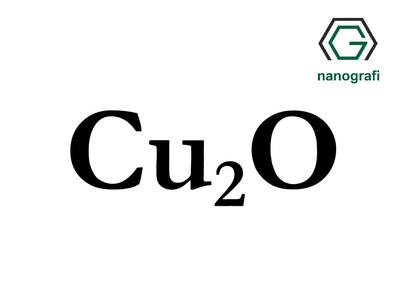General Information about Cuprous Oxide
Cuprous oxide is the inorganic compound with the formula Cu2O. It is one of the principal oxides of copper. Cuprous oxide can appear either yellow or red, depending on the size of the particles.
Cuprous Oxide Nanoparticles/Nanopowder and Application Areas

The importance of nanoparticles/nanopowder is growing day by day in today's world because of their unique properties. Like other nanoparticles/nanopowder, Cuprous Oxide nanoparticles/nanopowder are used in many different applications. Nanoparticles/Nanopowder of Cuprous Oxide can be used as antifouling agent for marine paints. In this application Nanoparticles/Nanopowder of Cuprous Oxide and can help extend operating life of stain proof paint. Cuprous Oxide Nanoparticles/Nanopowder can be used as stabilizing additive for anti-fouling paint. Cuprous Oxide Nanoparticles/Nanopowder are also used as catalyst as combustion improver additive in solid propellant and explosive. Cuprous Oxide Nanoparticles/Nanopowder are widely used in various fields based on their unique magnetic, electronic and optical properties, such as CO oxidation, gas sensing, photodegradation and photocatalyst.
Technical Properties of Our Cuprous Oxide (Cu2O) Nanoparticles/Nanopowder, 16 nm, Purity 99.95% Product
| Purity % | 99.95 |
| Color | red-brown |
| AVERAGE PARTICLE SIZE (nm) | 16.0 |
| SPECIFIC SURFACE AREA (m2/g) | 55.0 |
| Melting Point (°C) | 1240.0 |
| Boiling Point (°C) | 1800.0 |
You may reach Cuprous Oxide (Cu2O) Nanoparticles/Nanopowder, 16 nm, Purity 99.95% for your needs by the link given below:
You may reach Cuprous Oxide (Cu2O) Nanoparticles/Nanopowder, 80 nm, Purity 99.5+% for your needs by the link given below:
You may reach Cuprous Oxide (Cu2O) Micron Powder, 1 um, Purity 99.9% for your needs by the link given below:
Comments
Post a Comment